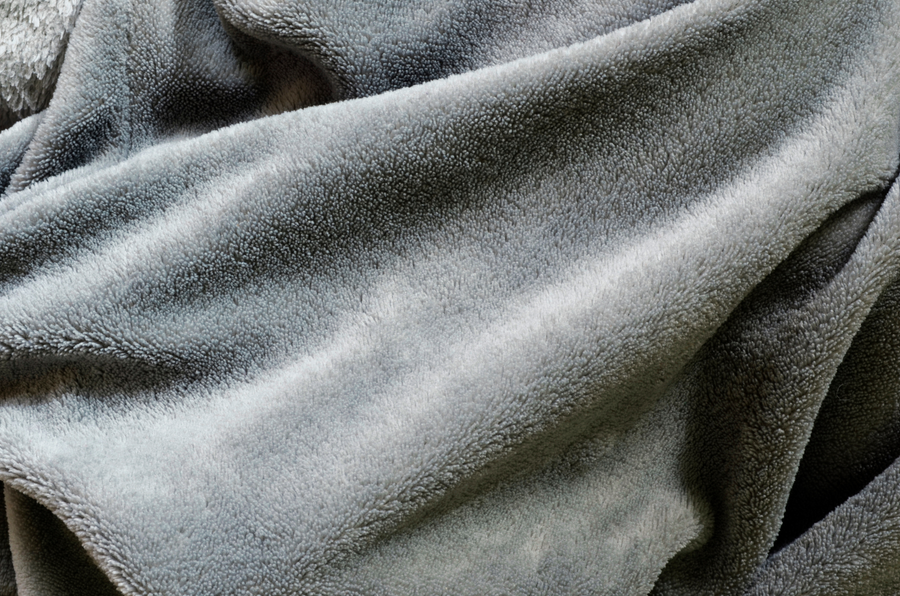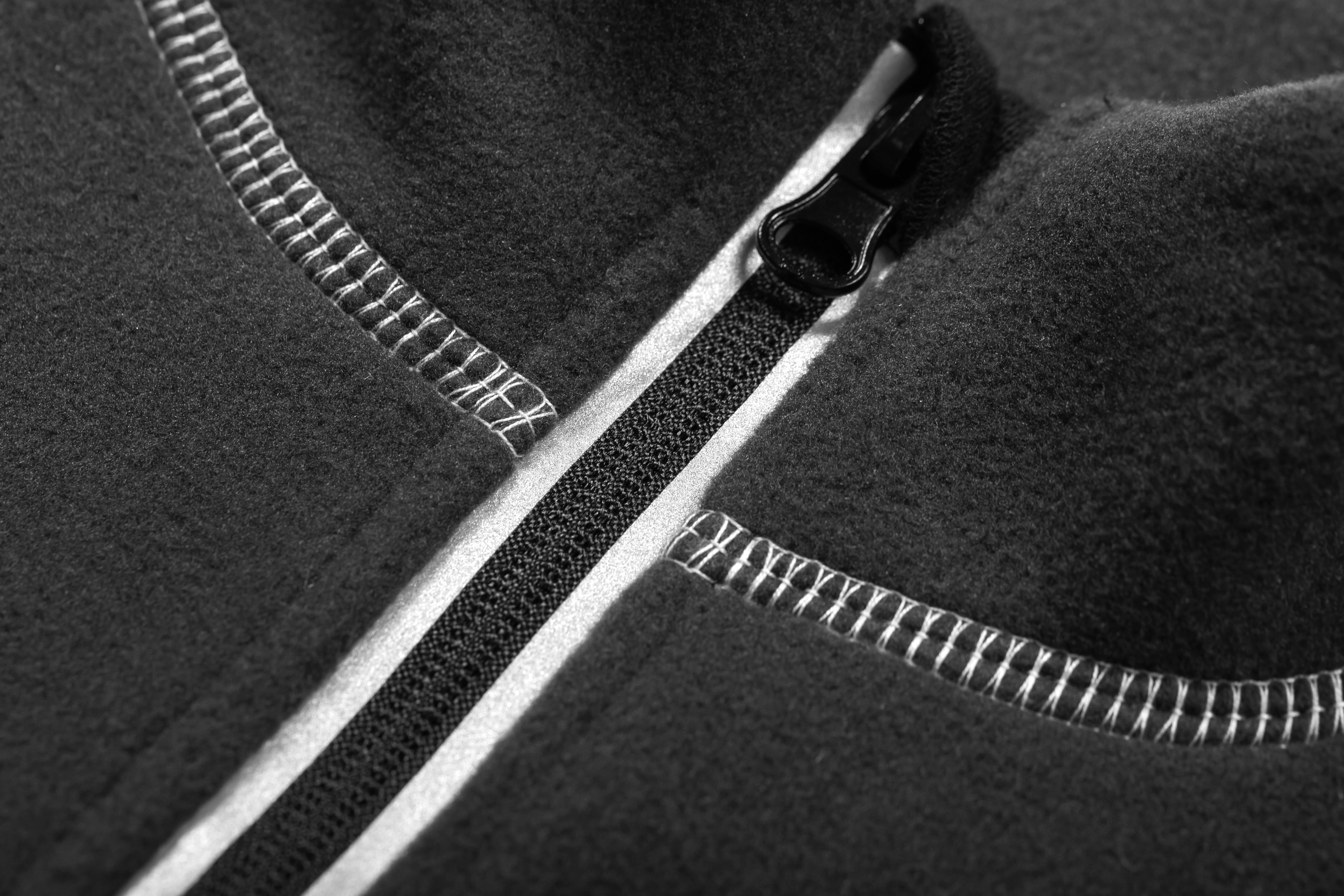Cozy Fleece Fabric: The Essential Fabric for Winter

Winter is such a magical season. Who doesn't love the snow falling, the cold air, and spending time indoors with family and friends? Winter is all about staying cozy and comfortable. It's the season for jackets, pajamas, hats, socks, and hoodies. A time for huddling together to stay warm!
If you're into making clothing, quilts, or other textile-based items, you know that fabric choice is essential to the overall comfort of your product. Should you choose wool, flannel, velour, or bamboo knits? These four fabrics are on the list of top winter fabrics, but one fabric stands out above the rest: cozy fleece.
Origin of Cozy Fleece Fabric
Getting to know the fleece fabric takes us back to our earliest human ancestors. As hunters and gatherers, they used animal furs for what we now call coats and jackets. They needed something to survive the harsh winters! In the Middle Age, the most popular fabrics for warmth included wool, silk, leather, and cotton. In the 1800s, scientists explored synthetic materials from natural items. Now, we have fabrics like rayon and nylon.
Fleece took over the world in 1979 when Malden Mills created the fabric. Referred to as the "Polarfleece," the soft fabric is known to be light, durable, and extremely comfortable. In 1981, fleece fabric was first used as a clothing material. Time Magazine named it one of the greatest inventions of the 20th century! Now, countless businesses use fleece fabrics, especially for winter clothing.
Most Common Fleece Products
Think about winter. What are some of your favorite items to wear? Chances are, they're made with fleece fabrics! Fleece jackets are a staple in any winter wardrobe. They come in all colors, styles, and designs. You can even find them with hoods! Fleece is also a standard fabric for pajamas. They're soft, comfortable, and keep you warm all night long.
Fleece blankets are another popular product. They come in all sizes, from small throws to large king-size blankets. You can find them in a variety of colors and patterns. Fleece fabrics are also a popular choice for hats, scarves, and gloves.
Fleece Fabric Characteristics
What is cozy fleece, and why do you usually find it in almost every type of winter clothing? The fabric is designed from polyester, which is made of threaded plastics. Fleece fabrics are polyester fibers spun into threads, dyed, knitted, napped, sheared, and sprayed with waterproof material. After this process, you get your hands on a cozy fabric that does the following:
Keeps Body Heat and Blocks Cold Air
When you wear clothes made of cozy fleece fabrics, it traps heat close to your body. Fleece is also great at blocking the cold air, making it the ideal material to wear in winter.
Deflects Moisture and Dries Quickly
Fleece can deflect moisture that makes you feel damp. It also dries quickly, so you can wear it again sooner without getting sick.
Keeps You Comfortable
Fleece is known for being good at wicking sweat and adapting to your body temperature. No matter how active you are, the fabric will keep you feeling comfortable.
It Lasts Long and Stays Lightweight and Breathable
Fleece is durable and can last for years with the proper care. Even after many washes, the material will stay lightweight and breathable.

Types of Fleece Fabrics
We've already established that cozy fleece is ideal for winter, but did you know there are different types of fleece fabrics? Here are some of the most popular styles:
Cotton Fleece
Clothing made of cotton-blended or cotton fleece has a smooth surface and plush inner nap. You commonly find this type of fleece used for sweatshirts and sweatpants.
Polyester Fleece
Polyester fleece looks shiny on its smooth side compared to cotton or blended fleece. Both have a smooth surface and plush inner side, but polyester repels moisture better than the former.
Lycra Spandex Fleece
Best for women and junior garments, this type of fleece is stretchy with cotton and lycra spandex. This is the ideal fabric to wear if you perform activities in the cold.
Microfleece
Perfect for performances like the lycra spandex fleece, micro-fleece is a thin and soft double-sided fleece.
Polar Fleece
Thicker and warmer than micro-fleece, you commonly find polar fleece in blankets and jackets.
French Terry Fleece
Unlike most types of fleece, the French terry fleece isn’t super fluffy. Both sides are unbrushed and thinner and flatter than other types.
Slub Fleece
Yes, you can find yarn somewhere in the different types of fleece! Yarns of two different sizes twisted together to make a slub fleece. This gives winter clothing a textured look.
Sherpa Fleece
Made of 100% polyester, sherpa fleece is very fluffy and looks like wool fleece. You can find them in garment linings, adding warmth to your fashion.
Anti Pill Fleece
This polyester fleece doesn't easily pill, making it ideal for high-use garments. Pills are caused by static electricity or abrasion during washing.
Plush Fleece
Incredibly soft and luxurious, the plush fleece is one of the most comfortable! You commonly find this fleece type used in heavy throw blankets.
Blizzard Fleece
The blizzard fleece is a better choice for your skin since it’s smoother and softer than the anti-pill fleece. This fleece type is the best option for buying blankets, scarves, and gloves.
Although there are several more types of fleece, these are some of the most popular! Fleece offers many benefits, and more companies are maximizing its use by exploring and creating different fabric variations. Talk about versatility!
A Guide To Choosing Fleece Fabric
How do you choose the right one with all these various types of fleece? It all boils down to what you need the fabric for and your personal preferences. Here are some factors to consider when selecting fleece fabric:
Type of Clothing and Warmth
The type of clothing you want to make will guide you in choosing the right kind of fleece. If you want stretchy clothes for an active lifestyle, go for lycra spandex or micro-fleece. The polar fleece is a better choice if you want something warmer, like a jacket. Fleece is already a cozy fabric, but some types are warmer than others. For example, sherpa fleece is very warm because it's made of 100% polyester.
Size of the Project and Budget
How much fabric do you need? French terry fleece is a good option if you're only making a small accessory like a scarf. Plush or blizzard fleece is a better pick if you're undergoing a big project like a blanket. Moreover, how much are you willing to spend on the fabric? Fleece is an affordable fabric, but some types can be more expensive than others.
How to Care For Fleece Fabric
Like any other fabric, fleece requires special care to keep it looking and functioning at its best. Here are some tips on how to care for your fleece product and fabric:
Wash in Cold Water and Use Gentle Cycle
Fleece can't withstand very high temperatures or tumble drying. The fabric may be durable, but heat and friction can melt or damage the fibers. The gentle cycle will prevent the fabric from being damaged in the washing machine.
Avoid Bleach or Fabric Softener
Bleach and fabric softener can ruin the smoothness of the fleece. To keep it looking smooth and new, avoid using these products.
Hang to Dry or Use Low Heat
After washing, either hang your fleece clothing to dry or use the low heat setting on your dryer. Again, too much heat can damage the fabric. Fleece is exceptionally soft and plush, which means it's also flammable. Don't iron it!
Use Lint Rollers
Fleece fabric has high amounts of static electricity, so it's prone to catching dust, pet hair, lint, and the like. To keep it clean, use a lint roller before wearing or storing the clothing.
Remember that fleece is flexible and lightweight, but it’s not windproof. It's moisture-resistant but not waterproof. Nevertheless, it remains insulated when wet, keeping you as warm as you need!
Working With Fleece Fabric
When using fleece for your garments, you may have challenges sewing and working with the fabric. Don't worry — here are some tips on how to use fleece fabric:
Use a Longer Stitch
Fleece is a slippery fabric, so you'll need to use a longer stitch when sewing. This will prevent the fabric from bunching up and make it easier to sew. Longer stitches will avoid distorting the fabric, too!
Consider the Nap
When cutting out the fabric, make sure you consider the nap. The nap is the direction of the pile or fuzz on the fabric, which can affect how the fabric looks. For example, if you're cutting a pair of pants, you'll want to ensure the fabric is cut in the same direction so the pants look consistent.
Embellish Carefully
Fleece is a delicate fabric, so you'll need to be careful when embellishing. Avoid using too many pins or iron-on appliques, as they can damage the fabric. Instead, opt for hand-sewn embellishments.
Lower the Presser Foot Pressure
You'll need to lower the presser foot pressure when sewing with fleece. This will prevent the fabrics from being pulled too tight.
Use a Walking Foot
A walking foot is an attachment that helps feed the fabric evenly through the machine. This is especially helpful when sewing with fleece, as it can be a slippery fabric.
Use Sharp Scissors
To avoid fraying and distorting the fabrics, use sharp scissors when cutting. This will help you get a clean cut and make it easier to sew. Remember, the fibers can get stuck in the scissors, so cleaning them is essential!
Use Ballpoint Needle
When sewing with fleece, use a ballpoint needle. This type of needle is designed to glide through the fabrics without damaging them.
Use Polyester Thread
Polyester and fleece fabrics have similar properties, so it's best to use polyester thread when sewing with fleece. This will prevent the fabric from fraying and make it easier to sew. Both need the same care when washing, too!
Fleece Fabric From Search For Fabric
You know how the fleece fabric came to be, you understand why it's an essential fabric for winter, and we've also covered the fabric's different types and which factors you should consider when choosing one for your winter clothes. You now know how to care for fleece garments and work with the fabric. The next challenge is — where should you buy it?
Think about your project. What type of clothing are you making? How many pieces of clothing do you need? What about your budget? Once you have the answers to these questions, it'll be easier to estimate how many yards of fleece fabric you'll need. Then, it's time to start looking with Search For Fabric!
Search For Fabric is a wholesale fabric supplier, thriving in the industry for 20 years. Our decades of experience with fabric have turned us into experts. We are based in the fashion district of Los Angeles, California, so we always have our hands on the latest trends. Our top products and services have been helping businesses and individuals succeed in their projects.
We maintain up-to-date inventory management, so you can rest assured that what you see on our website is what we have in stock. When you place an order with us, we'll ship it out as soon as possible. We value your time and your business, so we'll do everything we can to ensure you are satisfied with your purchase.
Search For Fabric is eager to help you find the perfect cozy fleece fabric for your winter project. What fleece fabric do you need, and what do we have for you? Call us at 213-623-2522 to know more!
